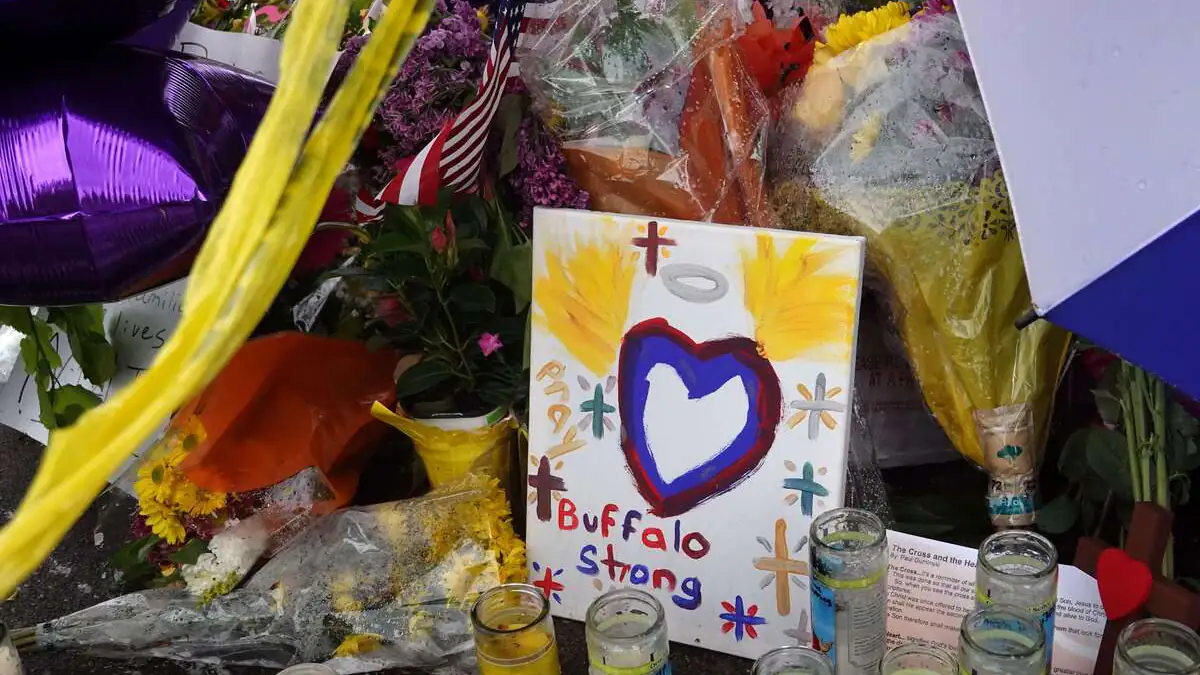The “great replacement” theory would have motivated theattack that claimed the lives of at least ten people, mostly African-Americans, last weekend in Buffalo. Here’s what you need to know about this far-right conspiracy theory.
A “racist crime motivated by hate”
Around 2:30 p.m. Saturday afternoon, an 18-year-old white supremacist drove more than 300 miles from the town of Conklin in southern New York state to the parking lot of a grocery store. Buffalo, near the Canada-US border.
The attack, which was broadcast on the Twitch platform, killed at least ten people, in addition to injuring three other people. 11 of the victims are black and two are white.
US authorities are calling the attack a “racist hate crime” because the young killer posted an online manifesto before taking action. He multiplies hate speech and references to the “great replacement” theory.
According to US media, the 180-page document is also filled with references to other crimes committed by white supremacists, including the Islamophobic massacre in Christchurch, New Zealand, in 2019. great replacement” had opened fire in two mosques, killing 51 worshippers.
This theory has also inspired several other murderous events targeting minority communities in Europe and the United States in recent years.
• Read also: Here’s why Vladimir Putin still wields the Nazi threat
What is the “great replacement” theory?
The “great replacement” is intimately linked to a fear of immigration, says Frédérick Nadeau, postdoctoral researcher at the Center for Expertise and Training in Religious Fundamentalism, Political Ideologies and Radicalization (CEFIR).
“Very simply, it’s the idea that a globalist elite seeks to obliterate white Western cultures and civilizations through the immigration of non-white people carrying a culture that is not assimilable,” he explains. he.
For the followers of this theory, this globalist elite would operate a “slow genocide”. In particular, they believe that the influx of non-white voters weakens the white vote, and therefore white communities. The objective would be to make the so-called “native” white peoples disappear in order to produce a “generic” human being and afford cheap labour.
Born in France in the early 1900s, this theory circulated in neo-Nazi circles from the end of the Second World War, then in other supremacist and far-right movements in recent decades. More recently, it was put forward by the French author Renaud Camus, in a book published in 2011.
“It is possible to trace its origins to supremacist and far-right groups, but today it has widened a bit. His concepts have spread in more popular media and political circles opposed to immigration”, specifies Frédérick Nadeau.
Indeed, “great replacement” themes are circulating in countries where immigration is polarizing, such as the United States and France. During the last French presidential campaign, far-right candidates, such as Éric Zemmour and Marine Le Pen, mentioned it.
What place does it occupy in Quebec?
Although present in Quebec, this theory remains quite marginal, indicates Mr. Nadeau.
“In Quebec, we saw the influence be felt in the years 2010-2015, with the emergence of openly neo-fascist movements, such as the Atalante group. But in general, we do not talk about it as explicitly as in France, where political parties and the major media organize debates around the question.
However, beware, warns Mr. Nadeau.
“The problem is that like all conspiracy theories, it is based on concerns that emanate from seeing one’s country or culture change. And there is no doubt that the face of Quebec and its values are changing. We are no longer in the Quebec of the 1960s. There is absolutely no “replacement” that awaits Quebec, and especially no organized replacement,” he insists.
The fear of seeing one’s values change can also distort reality and contribute to the rise of movements such as that of the “great replacement”, recalls the expert. In 2016, a survey conducted in Quebec illustrated this well.
“We asked Quebecers to estimate the proportion of Muslims in the province. In fact, the Muslim population represents about 3% of the population. But in people’s perceptions, we were around 20%. It’s a huge difference that comes from the anxiety of living in a changing world. We must therefore be careful and not underestimate these movements, because the world will continue to evolve,” he concludes.



